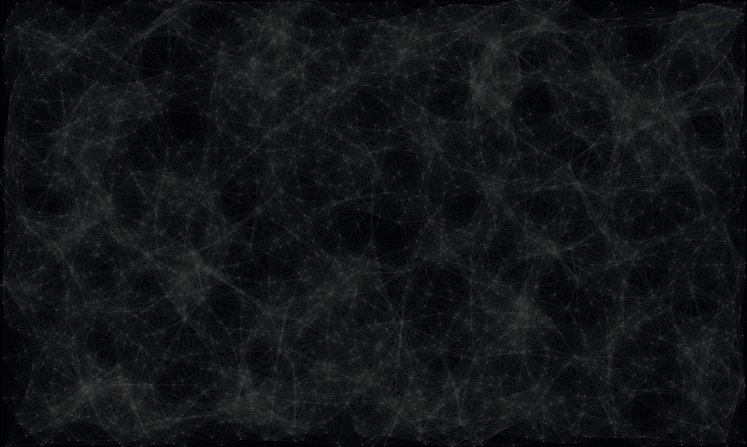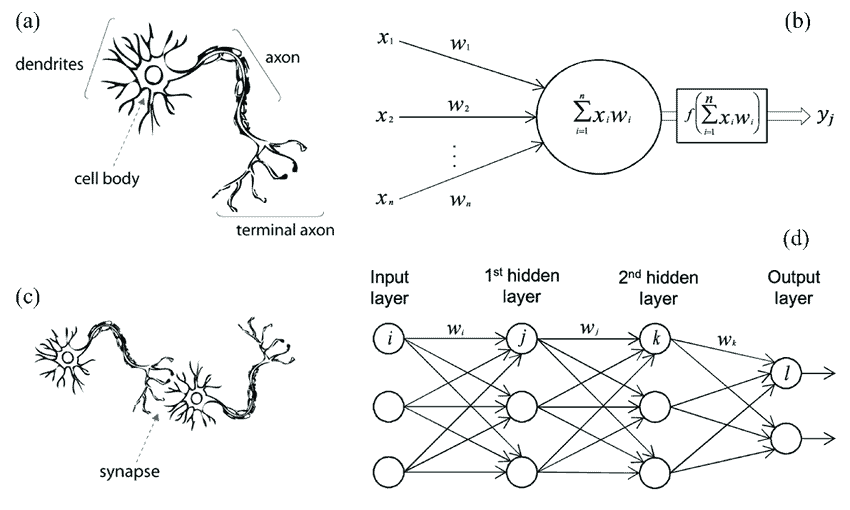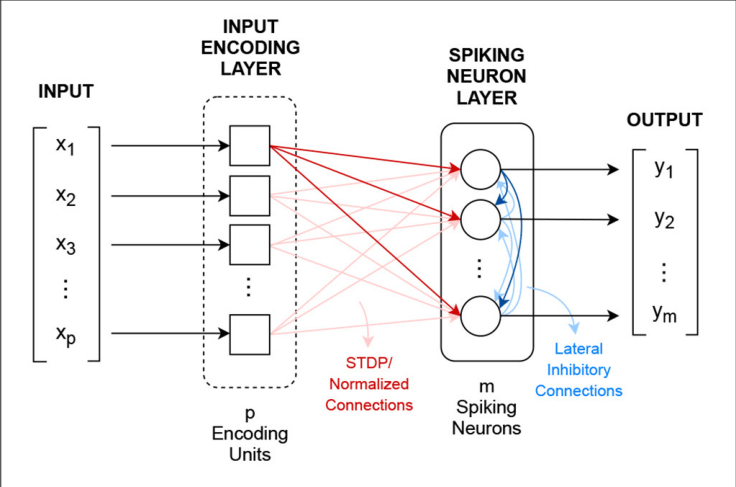How This AI Mimics The Brain
Ivan Yeung • 2024-05-06
𝗜𝗻𝘀𝘁𝗶𝘁𝘂𝘁𝗲 - 𝗖𝗼𝗺𝗽𝘂𝘁𝗲𝗿 𝗦𝗰𝗶𝗲𝗻𝗰𝗲 𝗨𝗻𝗶𝘃𝗲𝗿𝘀𝗶𝘁𝘆 𝗼𝗳 𝗦𝗮𝗻 𝗗𝗶𝗲𝗴𝗼 "It would take off on its own and redesign itself at an ever-increasing rate.”
Visualization of a growing spiking-neural network w/ unsupervised learning. (5000 neurons, 33187 synapse)
The capabilities of the human brain, with its billions of neurons and trillions of synapses, epitomize the pinnacle of natural evolution. This biological supercomputer has inspired a groundbreaking field in technology: neuromorphic computing. By mimicking the structure and function of the human brain, this approach aims to develop energy-efficient architectures that process information in a biologically plausible manner, thus paving the way for a new generation of artificial intelligence systems.
Neuromorphic engineering, inspired by our neural architecture, focuses on creating systems that can learn from their environments in ways that resemble human cognition. The potential of these systems lies in their ability to use energy-efficient methods such as unsupervised learning techniques, which mirror the learning methods found in the human brain. This approach contrasts starkly with traditional artificial intelligence systems that primarily rely on supervised learning, highlighting a significant shift towards more adaptive and autonomous forms of computing.
Among the most promising developments in neuromorphic computing are Spiking Neural Networks (SNNs). At their core, SNNs operate using spiking neurons that communicate through discrete electrical pulses or spikes. These spikes, which represent the rapid depolarization and repolarization of a neuron's membrane in response to stimuli, enable SNNs to encode and process information in a manner that closely mimics biological neural activity.
The advantages of SNNs are manifold. They are inherently energy-efficient due to their event-driven nature—computations occur only when neurons spike. This characteristic not only saves energy but also makes SNNs well-suited for low-power applications such as edge computing, Internet of Things (IoT) devices, and neuromorphic hardware. Moreover, their asynchronous processing and spike-based communication lend SNNs an inherent robustness to noise and variability, making them ideal for environments where sensory inputs are dynamic or noisy.
SNNs have already shown promise across various domains, from pattern recognition tasks like image classification and speech recognition to sensorimotor control. Their versatility and performance in these areas underscore their potential to revolutionize computing, making them a critical component of future neuromorphic hardware implementations.
However, the journey towards fully realizing the capabilities of SNNs and neuromorphic computing is fraught with challenges. The incredible complexity of emulating biological neurons and synapses poses significant hurdles in the developmental phase. Current training methods often require converting traditional neural network architectures into spiking equivalents, which can result in suboptimal performance. Moreover, neuromorphic hardware designs must navigate the delicate balance between accuracy, power efficiency, and scalability.
As the field of neuromorphic computing progresses, it is essential to remain critical and mindful of the potential consequences of these technologies. The unrestricted and unsupervised use of such advanced systems could lead to unforeseen complications, underscoring the need for careful consideration and responsible implementation.
In conclusion, as we embrace the future of neural computing, interdisciplinary collaboration between neuroscience, computer science, and engineering will be paramount. By continuing to draw inspiration from the human brain and refining the principles of neuromorphic and spiking neural networks, we can unlock a new era of intelligent and efficient computing systems. This next frontier in technology not only promises significant advancements in artificial intelligence but also offers a more sustainable and adaptive approach to computing that could reshape our interaction with technology.
Here’s the fun youtube video of the SNN visualization:
See More Posts
Copyright © 2021 Govest, Inc. All rights reserved.




